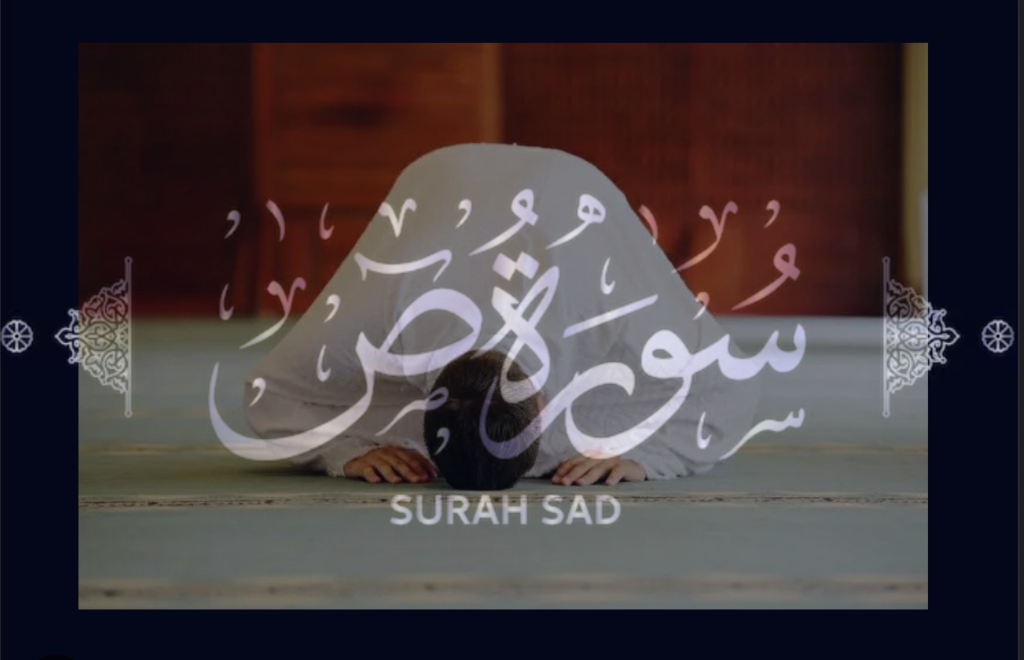The Sajdah of Surah Ṣād according to the Shāfiʿī Madhhab
Question
Alḥamdulillah, we are now in the last ten nights of Ramaḍān, wherein a Sajdah of Tilāwah of the 23rd Juz is performed in the Tarawīh Ṣalāh. The question is, what should a Shāfiʿī Muṣallī do in this instance? Does the Ṣalāh of a Shāfiʿī Muṣallī become void if the Sajdah of Surah Ṣād is performed?
Answer
It should be noted from the outset that this Sajdah is considered to be a Sajdah of Tilāwah according to the Ḥanafī Madhhab, whereas, according to the Shāfiʿī Madhhab it is considered to be a Sajdah of Shukr and cannot be performed in Ṣalāh.
Nevertheless, if the Sajdah was performed by a Shāfiʿī Muṣallī, then there are two possible scenarios. Either the Shāfiʿī Muṣallī finds himself as an Imām or as a Muqtadī (follower of an Imām). The ruling regarding each scenario is mentioned below.
Imām
If the Imām is a Shāfiʿī and makes the Sajdah of Surah Ṣād unknowingly or forgetfully then his Ṣalāh is still considered to be valid. If he does so intentionally and knowing that he should not, then there are 2 views that exists within the Madhhab:
- According to the Rājiḥ and preferred view, his Ṣalāh will become null and void.
- According to the non-preferred view, his Ṣalāh will still be valid.
Muqtadī (Follower of an Imām)
If a Shāfiʿī Muqtadī is following an Imām who performs the Sajdah of Surah Ṣād (irrespective of whether the Imām is a Shāfiʿī or Ḥanafī) then there are 2 views that exists within the Madhhab as well:
- The preferred view is that he should not follow the Imām. Rather, he should remain standing and wait for the Imām to come back up from Sajdah.
- The non-preferred view is that he should follow the Imām.
(Al-Majmūʿ Sharḥ al-Muhadhdhab Vol. 4 Pg. 61 Dār al-Fikr.)
Notes:
- If a Shāfiʿī Imām decides to give preference to the non-preferred view in order to mitigate any confusion between a congregation which is made up of Shāfiʿī and Ḥanafī Muṣallīs, as well as to keep the unity of the congregation, then it will be permissible for him to do so and his Ṣalāh will still be valid. Likewise, if a Shāfiʿī Muqtadī decides to follow the Imām who makes this Sajdah to prevent any confusion and keep the unity and unison of the congregation, then too it will be permissible for him to do so and his Ṣalāh will still be valid.
(al-Fawā’id al- Madaniyyah Pg. 317 Dār al-Fārūq).
- If a Shāfiʿī Muqtadī decides to practice on the preferred view of the Madhhab and remains standing whilst the Imām performs the Sajdah of Tilāwah, his Ṣalāh will still be correct.
- It would be appropriate that the congregants be educated with regards to these rulings in order to safeguard the congregation from any disagreements and confusion.
- In a scenario where there is a combination of Shāfiʿī and Ḥanafī Muqtadīs and there is fear of confusion setting within the congregation, then it is advised that in this specific case the Imām should be a Ḥanafī. When he recites the Sajdah of Surah Ṣād, which according to the Ḥanafī Madhhab is Wājib to make, he should immediately make the normal Rukūʿ and two Sajdahs of Ṣalāh at this point, in the like manner that he does at the end of any Rak’ah. In this instance, the Sajdah Tilāwah will be considered as fulfilled by this Sajdah of Ṣalāh. (Shaami Vol. 2 Pg. 111 H.M Saʿīd) By doing this, it will alleviate any confusion between the Ḥanafī and Shāfiʿī Muqtadīs.

